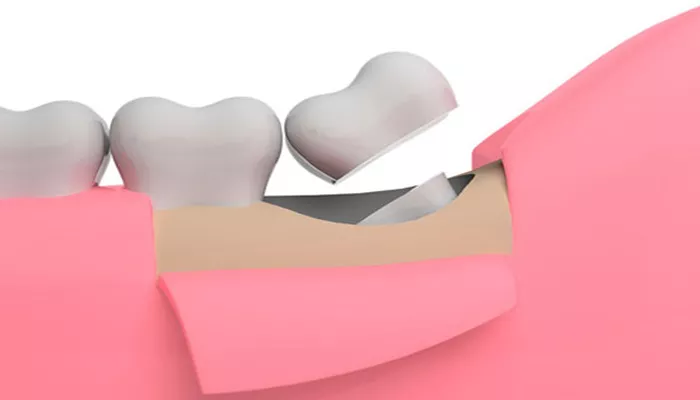Wisdom teeth, also known as third molars, are the last set of teeth to develop in the human mouth. They typically emerge between the ages of 17 and 25. While many people experience discomfort when their wisdom teeth come in, other dental or oral conditions can cause similar symptoms. This can lead to misdiagnosis and unnecessary worry.
Understanding what can be mistaken for a wisdom tooth issue is essential for proper dental care and treatment. This article will explore conditions that mimic wisdom tooth pain, their symptoms, and how to distinguish between them.
1. Impacted Molars
What It Is:
Sometimes, a second molar (the tooth in front of the wisdom tooth) may become impacted due to lack of space.
Symptoms:
- Pain and pressure in the back of the mouth
- Swelling and tenderness near the affected molar
- Difficulty opening the mouth
How to Differentiate:
An impacted second molar may show similar symptoms to an impacted wisdom tooth.
A dental X-ray is needed to determine which tooth is affected.
2. Pericoronitis (Gum Infection)
What It Is:
Pericoronitis occurs when gum tissue partially covers a growing wisdom tooth, leading to infection and inflammation.
Symptoms:
- Red, swollen, or painful gums
- A bad taste or smell in the mouth
- Difficulty chewing or swallowing
- Possible fever in severe cases
How to Differentiate:
Pericoronitis only affects the gum tissue over a partially erupted wisdom tooth.
If the swelling is isolated to the gums, it is likely a gum infection rather than a tooth problem.
3. TMJ Disorder (Jaw Joint Problems)
What It Is:
The temporomandibular joint (TMJ) connects the jawbone to the skull.
TMJ disorder can cause pain that feels like wisdom tooth pain.
Symptoms:
- Pain near the ear, jaw, or side of the face
- Clicking or popping sounds when opening the mouth
- Difficulty chewing or a locked jaw
How to Differentiate:
TMJ pain often worsens with jaw movement.
Wisdom tooth pain usually focuses on the gums and does not cause jaw popping.
4. Sinus Infections
What It Is:
The upper wisdom teeth are close to the sinus cavities.
Sinus infections can create pressure and pain that feels like wisdom tooth pain.
Symptoms:
- Nasal congestion
- Facial pain, especially around the cheeks and upper jaw
- Headaches and earaches
- Post-nasal drip or a runny nose
How to Differentiate:
If you have cold or allergy symptoms, the pain is likely from a sinus infection rather than a wisdom tooth.
A dentist or doctor can confirm the diagnosis.
5. Cavities or Tooth Decay
What It Is:
A cavity (dental decay) in a nearby molar can cause pain similar to a wisdom tooth problem.
Symptoms:
- Sharp or throbbing tooth pain
- Sensitivity to hot, cold, or sweet foods
- Visible holes or discoloration on the affected tooth
How to Differentiate:
A cavity causes pain when eating or drinking.
Wisdom tooth pain is often continuous and dull.
6. Gingivitis or Gum Disease
What It Is:
Inflammation of the gums due to poor oral hygiene or bacterial infection.
Symptoms:
- Red, swollen, or bleeding gums
- Bad breath (halitosis)
- Gum recession
How to Differentiate:
If multiple areas of the mouth are affected, it is likely gum disease rather than a wisdom tooth problem.
Wisdom tooth pain is usually localized.
7. Cysts or Tumors
What It Is:
Rarely, a cyst or benign tumor can develop near the wisdom tooth.
These can cause swelling, pain, and jaw discomfort.
Symptoms:
- A painless lump or swelling in the gums
- Numbness or tingling in the area
- Difficulty chewing or speaking
How to Differentiate:
A dentist or oral surgeon may need to take X-rays or a biopsy to rule out a cyst or tumor.
8. Trigeminal Neuralgia
What It Is:
A nerve disorder that causes intense facial pain.
The trigeminal nerve runs near the jaw and can cause tooth-like pain.
Symptoms:
- Sudden, sharp, or electric shock-like pain
- Pain triggered by chewing, talking, or even touching the face
How to Differentiate:
If pain is brief but severe, it may be nerve-related rather than a wisdom tooth issue.
9. Erupting Adult Molars (In Younger Patients)
What It Is:
In teenagers or young adults, the second molars may be erupting and causing pain.
Symptoms:
- Sore gums at the back of the mouth
- Mild swelling and tenderness
- No signs of wisdom teeth on an X-ray
How to Differentiate:
If a dentist confirms the wisdom teeth have not started developing, the pain is likely from a growing second molar.
10. Cracked or Fractured Teeth
What It Is:
A crack in a molar can cause pain similar to an impacted or infected wisdom tooth.
Symptoms:
- Pain when biting or chewing
- Sensitivity to temperature changes
- A visible crack or damage to the tooth
How to Differentiate:
A cracked tooth hurts most when chewing.
Wisdom tooth pain is more constant.
Conclusion
Many conditions can be mistaken for wisdom tooth pain. From impacted molars to sinus infections, nerve disorders, and gum disease, the symptoms often overlap.
If you are experiencing persistent pain, swelling, or discomfort, visit a dentist for a proper evaluation. A dental exam, X-ray, or other diagnostic tests can help determine the exact cause of the pain. Early diagnosis and treatment can prevent complications and ensure proper oral health care.

